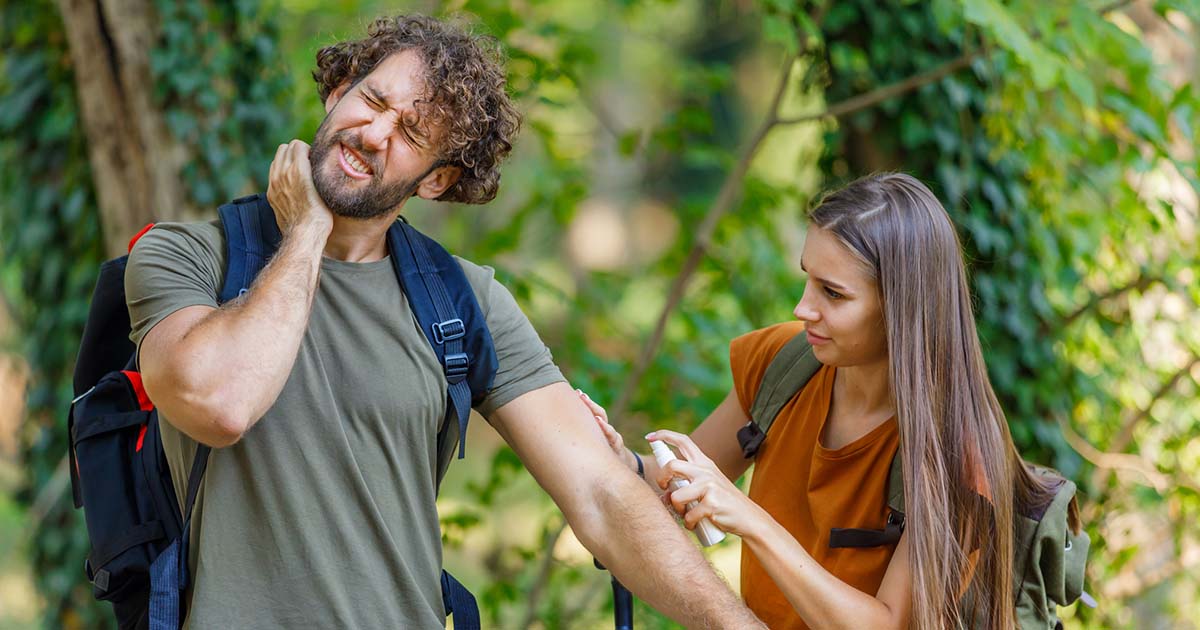How To Treat Bug Bites

Bug bites are one of the most annoying downsides of summer and can cause itching, diseases, and allergic reactions.
Some bites or stings can transmit disease-causing bacteria, viruses, or parasites, warns the U.S.-based Mayo Clinic. Stings from bees, yellow jackets, wasps, hornets, and fire ants might cause a severe allergic reaction (anaphylaxis).
Fortunately, most bug bites are nothing to worry about and you can treat them at home.
Canada’s most dangerous insects
Most bug bites are not dangerous but bites from these bugs can be:
- The black widow spider has a red hourglass mark on its back and is venomous. Get medical help if you are bitten.
- The brown recluse spider is not common, but you should also get medical help if you are bitten. It is deep yellow or brown with a violin-shaped mark.
- The hobo spider has herringbone-shaped markings and a large mouth, and you should get medical help right away if you are bitten.
- Mosquitos can carry West Nile virus so try to avoid them.
- Asian giant hornets are as big as your thumb and are the deadliest of all hornets with a dangerous bite.
- Ticks are flat, oval-shaped, and leathery looking. Young ticks have 6 legs and adults have 8. They range from 1-10 mm in length and can carry Lyme disease.
Treating mild bug bites
Mild reactions like swelling, itching, and stinging can be treated at home and will go away in a couple of days. Mayo Clinic suggests these steps:
- Move to an area where you will not get more bug bites and remove stingers.
- Wash the bug bite area with soap and water.
- Reduce pain and swelling by applying a cold cloth or ice pack for 10-20 minutes.
- Elevate your arm or leg if that is where the bite is.
- Apply baking soda paste, calamine lotion, or 0.5% or 1% hydrocortisone cream a few times a day until the symptoms are gone.
- Take an antihistamine medication and pain reliever as needed.
Dealing with a bug bite emergency
For severe reactions to bug bites, you will need to call for emergency medical help. Call 911 if someone is experiencing any of these symptoms of anaphylaxis following a bug bite:
- Swelling of the face, lips, throat, or eyes
- Trouble breathing
- A rapid and weak pulse
- Hives
- Nausea, diarrhea, or vomiting
- Fainting, dizziness, or unconsciousness
While waiting for help, do the following:
- Ask the injured person if they have an epinephrine autoinjector such as an EpiPen and whether they need help injecting the medication. This is normally done by pressing the autoinjector against their thigh and holding it there for a few seconds.
- Cover the person with a blanket and loosen tight clothing.
- Do not offer them anything to drink.
- Position them to prevent choking on vomit if needed.
How to remove a tick
If you are hiking or camping, make sure to check for ticks and remove them immediately to reduce the risk of contracting Lyme disease. The Canadian Red Cross explains that Lyme disease is a tick-borne illness caused by the bacterium B. burgdorferi that can cause fever, fatigue, headache, and serious heart, joint, and neurological symptoms.
A number of animals and birds can carry Lyme disease-bearing ticks long distances, so all Canadians should be aware of tick bite prevention and treatment procedures.
- Try to avoid ticks by walking in the middle of trails and checking for ticks when you return, including the scalp, armpits, and groin. Also, check pets for ticks.
- If you see a tick, first try to brush it off.
- If it has burrowed into the skin, use tweezers or a tick removal key to grab the head without squeezing it and pull the tick out without twisting.
- Wash the area with soap and water.
- Seek medical attention if you cannot completely remove the tick or a round, red rash or flu-like symptoms develop withing a month.


.jpg?300x300)
